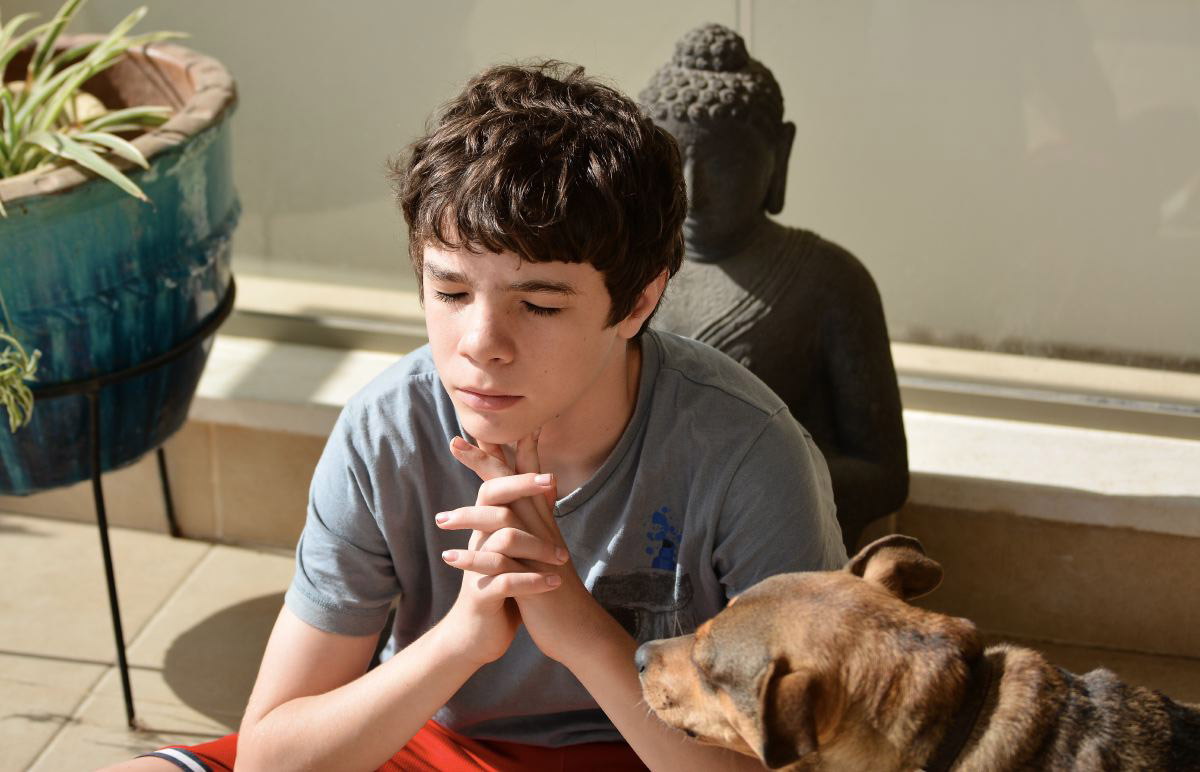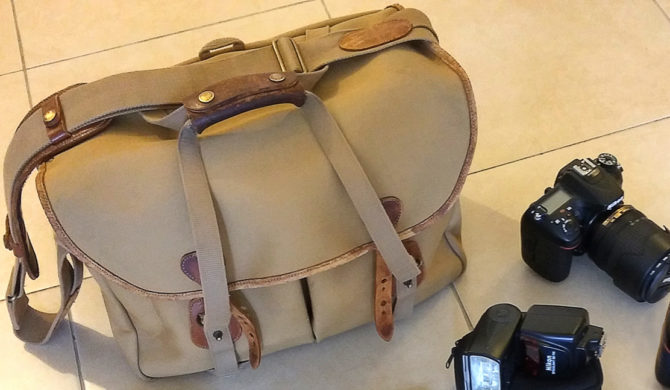
WHAT’S IN THE BAG
When I first became interested in photography I used to regularly buy a major weekly photography magazine. One of my favourite articles was “What’s in the bag” – I was fascinated to find out what professional photographers carried around with them. Now, many years later, I thought it would be fun to see what I actually carry around in my own bag.
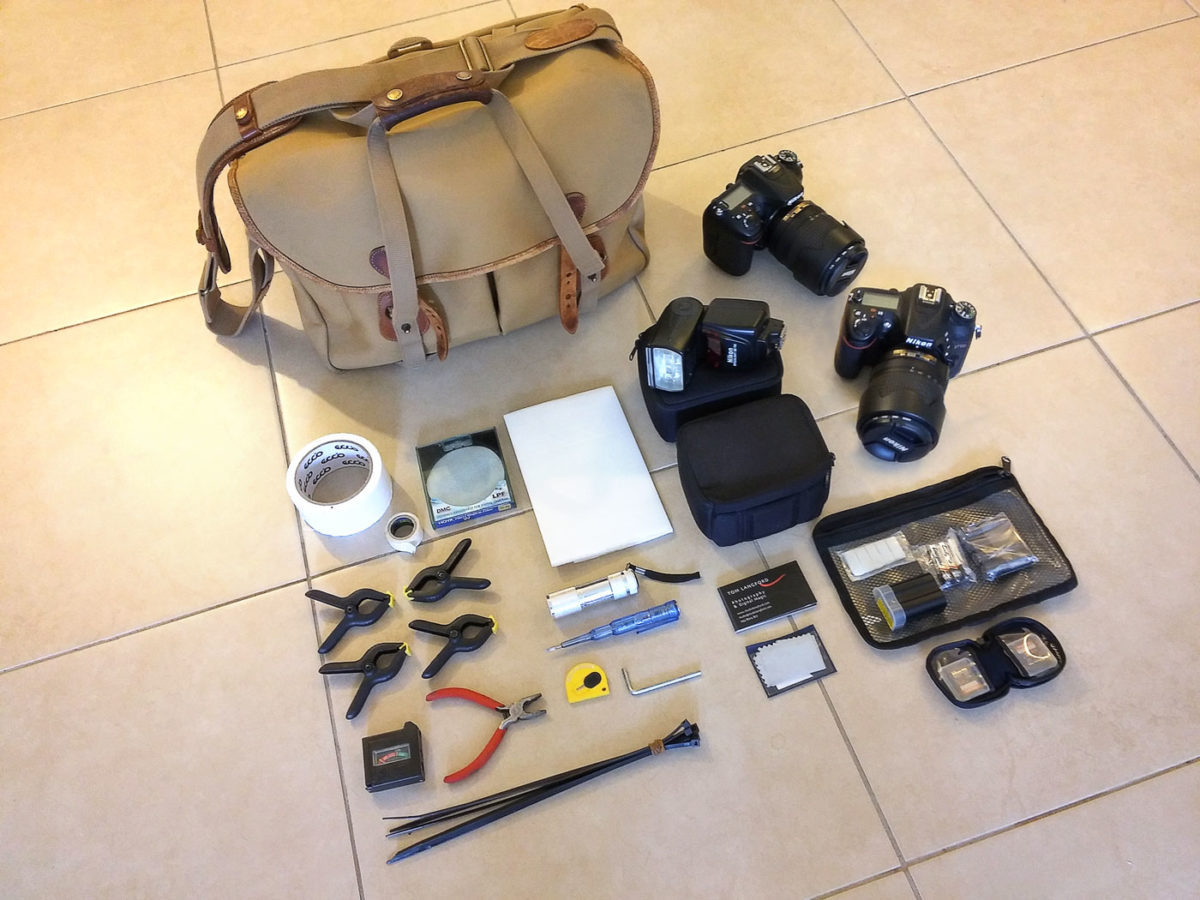
Of course, different shoots may need extra gear – if I’m shooting products at a clients showroom or fashion models in a studio I will bring whatever else is required, but the contents of my bag are fairly stable. I’ve emptied it out without editing or tidying it up, and here’s what I found ….
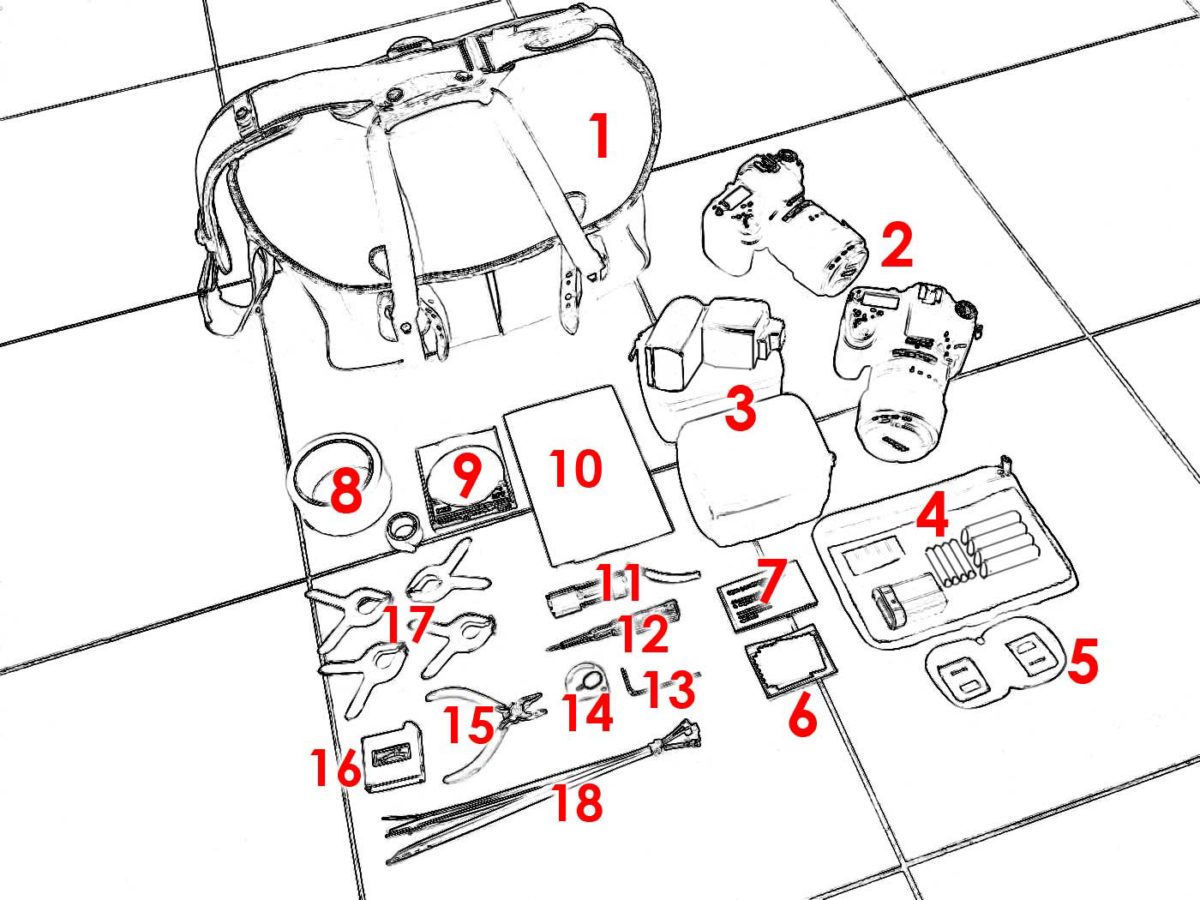
The Bag …
1) I use a Billingham bag that I’ve had for over 25 years. It’s waterproof, rugged, very well made from two thicknesses of canvass bonded to butyl rubber, with leather trim and straps, and has brass fixtures. I’ve replaced the inner partitions which had gradually worn away, but the bag itself is still in excellent condition.
I prefer it to the more common rucksack bags because everything is quickly available and it has only three long zips. I have some fancy bags with lots of pockets and zips but I use them only for storage – they are just too fiddly for me. And this bag has certainly stood the test of time!
Billingham still make camera bags, and the closest match to mine is their Hadley Pro Large – expensive, but I think well worth it.
What’s in The Bag
2) Two Nikon D7100’s cameras, each with an 18-140mm Nikon zoom lens. The cameras have APS-C (half-frame) imaging sensors that have an important advantage over cameras with FX (full-frame) sensors because they capture images with greater depth of field, so more is in focus. This is ideal as most of my commercial work requires images that are sharp from front to back.
These half-frame cameras give excellent image quality at lower ISOs, and the 18-140 zooms produce sharp images when used with care. This combination is idea for shooting in fast moving situations, such as live events, because it is so lightweight and can be carried around in one hand for hours.
I add other lenses to the bag when needed, such as the excellent Tokina ATX 11-16mm F2.8 wide angle zoom that I use for architectural shoots, and the extremely sharp Sigma 50-150mm F2.8 OS that’s great for shooting products and portraits.
3) Two Nikon SB700 flash guns. They are excellent, reliable and very well built. I use them mainly when shooting events. Mounted on the cameras hotshoe they’ll easily give 2000 shots of fill flash over a period of 5 hours. They have a very efficient standby mode that saves battery power when the camera is idle and wake up immediately when I need to shoot.
(They are also very useful when extra light is necessary on commercial shoots (which are mainly lit by mains powered flashes in softboxes). They can be triggered remotely using a radio transmitter on the cameras hot shoe, and a radio receiver mounted on the base of the flashgun.)
4) Spare Batteries: I always carry extra batteries for the camera, some Eneloop rechargeable AA batteries for the flashguns, and a few AAA batteries for the radio triggers. The first time I almost ran out of battery power during an important shoot was the last time! There is also a small packet of “white tack” that’s useful during product shots to prop up and secure various items.
5) Spare 64GB SD cards in a small wallet. Nikon D7100 cameras have two SD card slots. I use 64GB high speed SD cards: Images are saved to the first card and backed up on the second card.
I save images as Raw files which have larger file sizes than Jpegs, but I’ve not yet managed to fill up a 64GB card. I keep the spares, just in case a card gives me problems.
6) A small lens microfibre cleaning cloth. When I buy a new lens I always screw on a new UV filter – this way the front surface of the lens remains pristine and I only need to clean the UV filter when necessary.
7) Business cards.
8) The photographers best friend, Gaffer Tape! There are countless uses for gaffer tape! The Apollo 13 astronauts lives were saved partly because they had gaffer tape on board their space craft. I always have a roll of white gaffer tape in my bag.
And you’ll see beside it a small roll of double-sided tape, handy for temporary, invisible repairs during a shoot.
9) & 10) A piece of white plastic board and a circular piece of foam packaging from a UV filter. Both can be used to set an accurate white balance in difficult lighting conditions…
I place the white card in the shot so it’s illuminated by the major light source. I zoom in until the card fills the frame and then take a WB exposure which sets a reasonably accurate custom white balance. Since I shoot in Raw I can also adjust the WB afterwards too.
Another way to set the white balance is to place the foam disc over the lens, then point the camera towards the major light source and take a WB exposure. I use either method when colour accuracy is critical in difficult lighting conditions. But as I shoot in Raw I can always tweak the WB afterwards.
11) A small torch. Events often take place in the evening or in dimly lit venues. Best have a torch handy.
12) A small screwdriver that is also a circuit tester. Useful to fault-find and fix electrical problems with plugs and cables.
13) I use a large Benbo tripod for some location and studio work. This small Allen key is used to modify the tripod.
14) A tiny holder with a retractable craft knife blade: Alway useful and almost weightless.
15) A miniature pair of pliers. Yes, I could just have a multitool Swiss army knife, etc, but this is much lighter and has helped me fix a good variety of things.
16) A small battery tester. Useful if I need to check which battery is causing trouble.
17) Zip ties are extremely strong and can be used to lash things securely together or secure broken parts.
As you can seen I try to prepare for the unexpected and, so far, have always been able to complete the shoot no matter what has happened. Being a professional photographer requires not only visual and creative skills, but a pragmatic approach to getting the job done.
What’s not in The Bag
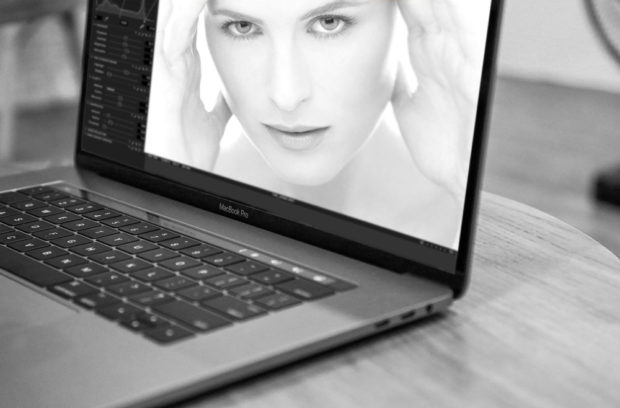
By using a cable to tether the camera to the laptop (with Capture One editing software) shots are almost instantly transferred and assessed.
My bag contains just contains essential gear. I will add a variety of lighting equipment and backgrounds, lenses, etc, depending on what the shoot requires.
For some situations I will also take a laptop and a cable to tether the camera to the laptop. Each picture that I shoot is almost instantly transferred to the computer for critical viewing. Clients and art directors appreciate this as it helps to create superior results.
I always record images as Raw files and use Capture One on the laptop to view and edit them. Capture One (or a similar app such as Lightroom) is as important a tool for photography as a camera.
By the way, I’m not affiliated with any of the products mentioned here. This is the stuff I’ve used for years and it works for me.

